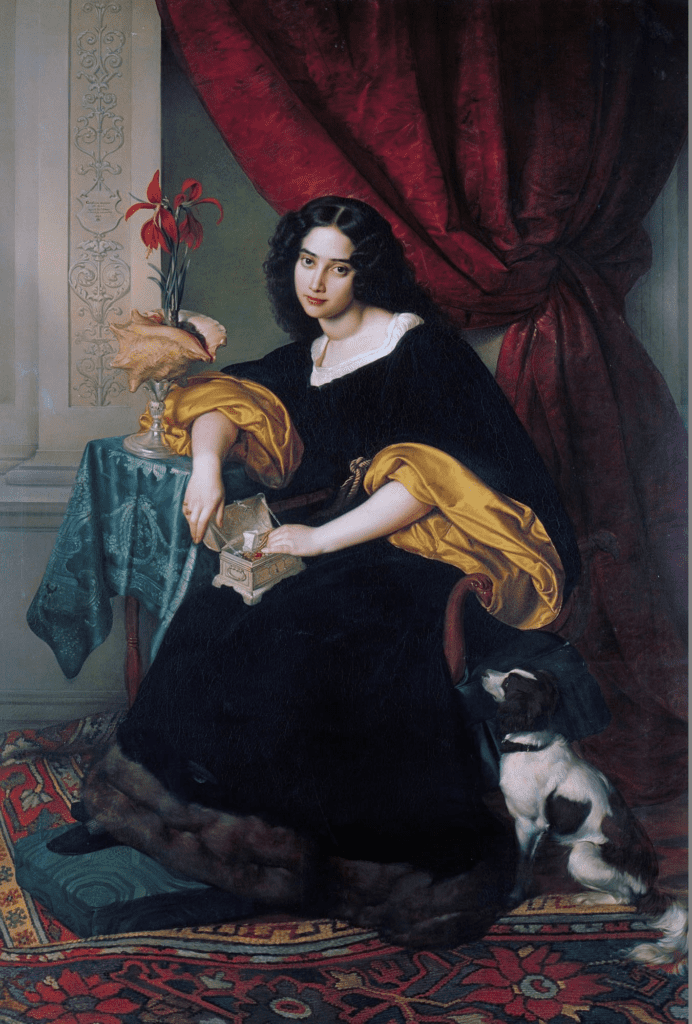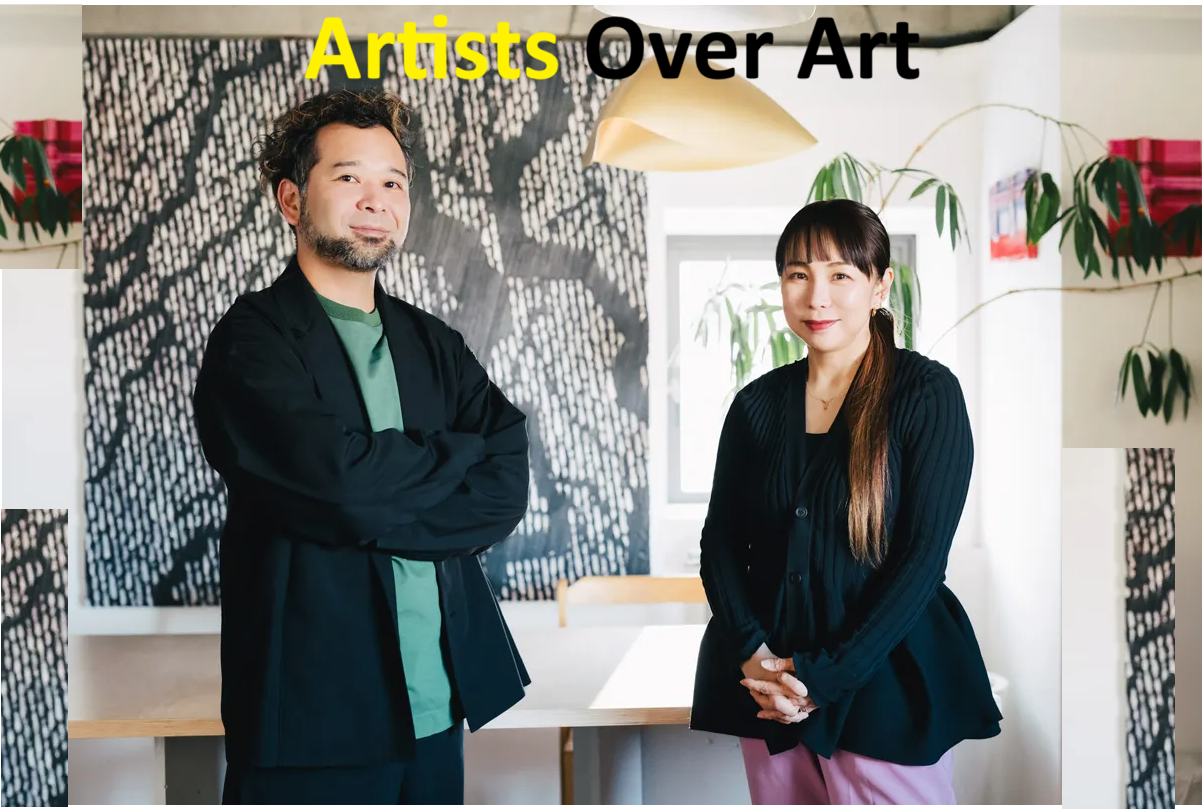Artists Over Art
“Art” is often used as a buzzword in the business world. How can we leverage this growing interest to ensure it isn’t just a passing trend, but rather a step towards a future where culture, economy, and society are more interconnected? This is where Artists Over Art comes into play.
To address this question, Forbes JAPAN launched the “Art & Business Project” in earnest last fall. This time, we will present three interviews with experts who have been appointed as advisors. The first installment features Yuko Nagayama and Junya Yamamine, two of Japan’s leading figures in architecture and curation. What perspectives do these two, who frequently collaborate on projects, currently have on the world?
Current status of development and art business

Junya Yamamine (hereinafter referred to as Yamamine): My job involves curation, planning, and consulting for art-related projects. The projects I handle are roughly split 50-50 between government and corporate clients. Even if the projects are similar, the approach varies significantly: for the Tokyo Metropolitan Government, we handle it in a public manner, while for a company, we consider factors such as monetization and ensuring sustainability as a business.
So, first of all, we need to break down the mission of the company or organization, go back to the business diagnostic stage, and ask, “If your company were to do an art business, what would it look like?” From there, we can proceed with the proposal. There are many possibilities to explore.
Yuko Nagayama (hereinafter referred to as Nagayama): As an architect, I am often involved in work related to urban development, and I am required to add new value to the architecture itself and create a new look for the city.
For example, I was in charge of the exterior and interior design for Tokyu Kabukicho Tower, which was completed in 2022. The location was once a swamp, and it became Japan’s first entertainment-specific skyscraper without any offices. We designed the building with the image of a fountain to create a distinct appearance, setting it apart from the office buildings in Shinjuku. As expected, art plays a significant role here, with works curated by the contemporary art gallery ANOMALY, aligned with the unique location of “Kabukicho,” exhibited at various locations within the facility.

As with Kabukicho Tower, when developing in a National Strategic Special Zone, it is essential to foster the culture of the area. Given these circumstances, developers everywhere are now looking to incorporate Artists Over Art into town development. One reason behind this trend is that Artists Over Art production locations are being pushed outside of cities, becoming far removed from general society. This leads to a negative reaction of “I don’t really understand what art is.”
Akira Fujimoto, an artist and my husband, is running a project called “Sono Aida,” which utilizes vacant properties or properties scheduled for reconstruction as artist residences. He is continuing to develop this project in Yurakucho and Nihonbashi.
Fujimoto is endeavoring to reintegrate Artists Over Art activities into the city. During these initiatives, developers often envision the artworks neatly lined up. However, since artists, who are real human beings, create these works, friction or conflict is inevitable.
Artisan Artists Over Art Cycles

For instance, I struggled with the noise and odors associated with art production, especially when Artists Over Art worked late into the night. Such actions, including conflicts, can bring about small changes in the city. Unlike architecture, which evolves over decades, artists can effect changes in months or years. I appreciate these differing cycles. It would be wonderful to establish a cycle where artists actively engage with the city in their creative processes, and their experiments and outputs contribute to urban development, providing insights for future city planning.
Yamamine: In the “KOBE RePublic Artists Over Art Project” that I collaborated on with Mirai Moriyama, our initial task was to create public art. However, we felt it was pointless to erect monuments that lacked any meaningful connection. Drawing from this insight, our goal shifted to rediscovering the intrinsic charm of the city’s places and people through the perspective of visiting artists, fostering communication, and enhancing the area’s local vitality.
Additionally, when we established ANB Tokyo, an art space housed in a disused building in Roppongi, community building was a central theme. In this endeavor, we drew inspiration from successful models such as PS1 in New York.

Although it has now merged with the Museum of Modern Artists Over Art (MoMA) in New York, PS1 was originally an elementary school that artists renovated and transformed into a community development hub. Creative individuals were drawn to the area, spurred by unforeseen possibilities, gradually revitalizing the entire city and boosting the area’s value. There are numerous instances where art has proven to have such significant social impact.
On the other hand, while an artist’s creative endeavors may yield outcomes that resemble products, translating this process into a method poses challenges. Businesses often seek to design evaluations focused on the artwork’s impact, but in doing so, they risk shaping artworks to fit predetermined metrics. Artists, however, do not conform to predictions or evaluation criteria; demanding such conformity would be getting things backward.
We don’t have a social system that can accept “artistic thinking”

Yamamine: I believe that the concept of Artists Over Art discussed in the business world resembles “unlearning.” It suggests that conventional, ingrained methods no longer suffice, urging us to break away and explore “possibilities beyond…” However, when it comes down to implementation, there’s often resistance, with responses like, “I’m uncertain because I’ve never tried that before” (lol). We should be searching for the unprecedented. Thus, I sense that a framework accommodating artistic thinking has yet to be fully established.
Nagayama: Frankly speaking, it also relates to the education about Artists Over Art from childhood. Developing culture isn’t a short-term endeavor; it requires a long-term perspective.
Yamamine: That’s correct. Regarding education, when I was at the 21st Century Museum of Contemporary Artists Over Art in Kanazawa, we had a program for local elementary school students. It was daunting to have children moving around among valuable works, but it was a highly beneficial initiative. However, Japan still lacks the same level of openness as European museums, where children are allowed to freely enter, sketch, and copy artworks.
This also applies to urban system design, where Japan is increasingly imposing restrictions. Motoichi Terai, involved in urban development in Matsudo, once mentioned his experience researching city regulations in Shibuya. He discovered an overwhelming number of regulations and suggested that creating an unrestricted district could make the city more vibrant and engaging.
Nagayama: In today’s Japan, we often see a highly controlled society where rules are decided by those in authority, creating discomfort for those being managed. In contrast, there’s the 52-ma Enwa day care center for the elderly in Yashiro City, Chiba Prefecture, which won the Grand Prize at the Good Design Award last year. Typically, such facilities are secured to prevent elderly from wandering, but 52-ma Enwa is an open space where local residents can freely come and go without barriers or closed gates.
To achieve this goal, we are actively fostering strong relationships with local residents, establishing a system where people can inquire, “I saw Mr. __ outside earlier, is everything alright?” Rather than rigidly adhering to management protocols, we prioritize the well-being and happiness of those involved.
The same principle applies to our approach in the Artists Over Art initiative within our town. Artists are not inclined to work in overly regulated environments. Similarly, in the realm of commercial spaces, if the aim is to attract unique and compelling shops, the straightforward solution often lies in reducing rental costs. During the design phase, challenges may arise with spaces that are unconventional in size or layout, which can pose difficulties in finding buyers or lessees.
It’s essential to strategically design such “surplus space” and offer it at affordable rents as an incubation space for stores willing to explore new ventures. This approach not only enhances the city’s appeal but also benefits both parties involved. Establishing rules with a long-term perspective, focusing on transparency and inclusivity, becomes crucial in shaping a vibrant and sustainable urban environment.
Yamamine reflected, “As I listen to your thoughts, words like agility, resilience, care, and well-being come to mind. A resilient society thrives on agility, enabling continuous care and fostering well-being or happiness.”
architecture and business

Yamamine posed the question, “In our involvement with the Artists Over Art & Business Project as advisors, how do architecture and business intersect today?”
Nagayama commented, “Architecture and business are fundamentally intertwined, involving capital investment, spatial creation, and business development. It’s an inseparable relationship. Lately, I’ve noticed a shift in values. For instance, architects are increasingly incorporating ‘unsellable spaces’ like terraces and green areas to enhance quality of life in their designs. Before the COVID-19 pandemic, these spaces were often minimized, but now there’s a growing appreciation for them.”
What matters most for a store is its ability to communicate a message rather than just making sales. Anyone can visit a store and buy online; the real challenge lies in creating an engaging experience. More importantly, we should focus on ensuring the happiness of the staff. A well-designed space boosts employee motivation, which in turn enhances customer service. Ultimately, it’s people who sell to people, not buildings, and this human connection is paramount.
Now, in the aftermath of the coronavirus pandemic, there’s an increasing demand for experiences that can’t be replicated virtually. We’re entering an era where thoughtful consideration is given to places that align with the structure and architecture. Architects are now playing a more integral role in the early stages of planning than ever before.
Yamamine emphasizes that everything hinges on where you can make interventions. Simply following instructions often doesn’t fulfill the mission clients aim for. That’s why I engage right from the schematic design stage. This approach builds up resources that can be revisited when confronted with challenging situations.
Japan’s strength in supporting local issues

Nagayama reflected on her experience as vice chairman of the Good Design Award judging committee last year. She began contemplating the award’s distinctions from international counterparts, its global standing, and potential avenues for advancement. Reevaluating insights from overseas judges struck a chord with her. Notably, entries in the Good Design Award seldom address global concerns like climate change and poverty, focusing instead on meticulous responses to local and micro-level issues. This, she mused, might be a distinctive trait of Japan.
The Japan Pavilion at the 18th Venice Biennale International Architecture Exhibition last year showcased Maki Onishi’s O+H work, contrasting with other countries’ global issue-focused exhibits. Instead, it spotlighted Takamasa Yoshizaka’s project aimed at reevaluating the Japan Pavilion itself, fostering a new community. This distinctive approach garnered attention for its intriguing reinterpretation of the Pavilion’s role and impact.
Yamamine: I went to see it too, and it was a very detailed exhibition.
Nagayama emphasized that by addressing local micro-issues seriously, they can eventually contribute to solving global challenges. This awareness, she believes, can enhance Japan’s ability to effectively communicate its perspectives to the world.
Yamamine expressed that the challenge lies in combining unconscious politeness and inherent qualities to create something significant. He acknowledged that both Artists Over Art and architecture are currently undergoing a transitional phase, realizing that meaningful change won’t arise merely from competition.
What we should do next is connect individuals who envision a future beyond incremental steps and catalyze a movement akin to a gentle wave. Today’s discussion has underscored that Artists Over Art and architecture are contemplating grassroots cultivation methods. In Japan, there appears to be significant potential in this approach.
Must Read: EMPOWERING KYOTOGRAPHIE: BEAUTY CAPTURED BY 1 FRENCH PHOTOGRAPHER
